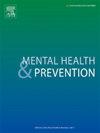健康科学专业学生自杀意念和自杀企图的患病率:一项系统回顾和荟萃分析
IF 2.4
Q2 Medicine
引用次数: 0
摘要
卫生科学专业学生的自杀意念和自杀企图日益受到关注,需要对其全球流行情况进行系统评估。目的通过系统回顾和荟萃分析,了解健康科学专业学生自杀意念和自杀企图的患病率。方法系统检索SCOPUS、Web of Science、PubMed、EMBASE。使用经过验证的工具进行自杀风险评估的研究,包括标准化量表和自我报告,被认为是合格的。研究可以采用概率或非概率抽样,不受语言的限制。按评估工具和时间框架进行分层meta分析,按研究年份进行meta回归。结果在1277份确定的记录中,38项研究符合入选标准。自杀意念评估使用两种工具进行:贝克量表(Beck Scale)评估终生自杀意念,其患病率为14.09% (95% CI: 11.39 - 17.02%); PHQ-9(患者健康问卷-9)的第9项评估过去两周内的死亡意念,其患病率为19.18% (95% CI: 12.65 - 26.69%)。自杀企图,按时间框架评估,显示“一生”的患病率为7.06% (95% CI: 4.35 - 10.35%),“过去12个月”的患病率为4.45% (95% CI: 2.62 - 6.71%)。时间元回归无明显趋势。结论健康科学专业学生中自杀意念和自杀企图的患病率很高,但因评估工具和时间框架的不同而存在差异。这些发现,尽管受到研究的异质性和样本的有限代表性的影响,强调了在健康科学教育机构中实施系统筛查和预防计划的必要性。本文章由计算机程序翻译,如有差异,请以英文原文为准。
Prevalence of suicidal ideation and suicide attempts among health sciences students: a systematic review and meta-analysis
Introduction
Suicidal ideation and suicide attempts among health sciences students represent a growing concern that requires a systematic evaluation of their global prevalence.
Objective
To determine the prevalence of suicidal ideation and suicide attempts among health sciences students through a systematic review and meta-analysis.
Methods
A systematic search was conducted in SCOPUS, Web of Science, PubMed, and EMBASE. Studies that used validated instruments for suicide risk assessment, including standardized scales and self-reports, were considered eligible. Studies could employ either probabilistic or non-probabilistic sampling, with no restrictions on language. Stratified meta-analyses were performed according to assessment instrument and time frame, and meta-regression was conducted by year of study.
Results
Of 1277 identified records, 38 studies met the eligibility criteria. Suicidal ideation assessment was conducted using two instruments: the Beck Scale, which assesses lifetime suicidal thoughts, showing a prevalence of 14.09 % (95 % CI: 11.39–17.02 %), and item 9 of the PHQ-9 (Patient Health Questionnaire-9), which evaluates death thoughts in the past two weeks, with a prevalence of 19.18 % (95 % CI: 12.65–26.69 %). Suicide attempts, evaluated by time frame, showed a prevalence of 7.06 % (95 % CI: 4.35–10.35 %) for "lifetime" and 4.45 % (95 % CI: 2.62–6.71 %) for the "past 12 months. " Temporal meta-regression showed no significant trends.
Conclusions
The prevalence of suicidal ideation and suicide attempts among health sciences students is substantial, varying by assessment instrument and time frame. These findings, though affected by considerable heterogeneity across studies and limited representativeness of samples, underscore the need to implement systematic screening and prevention programs in health sciences educational institutions.
求助全文
通过发布文献求助,成功后即可免费获取论文全文。
去求助
来源期刊

Mental Health and Prevention
Medicine-Psychiatry and Mental Health
CiteScore
2.10
自引率
0.00%
发文量
22
审稿时长
24 days
 求助内容:
求助内容: 应助结果提醒方式:
应助结果提醒方式:


